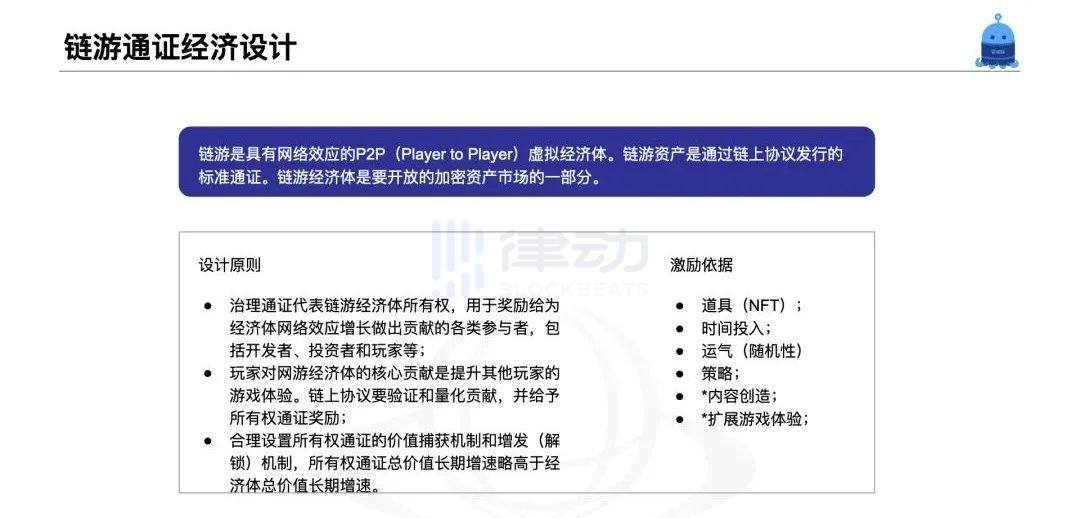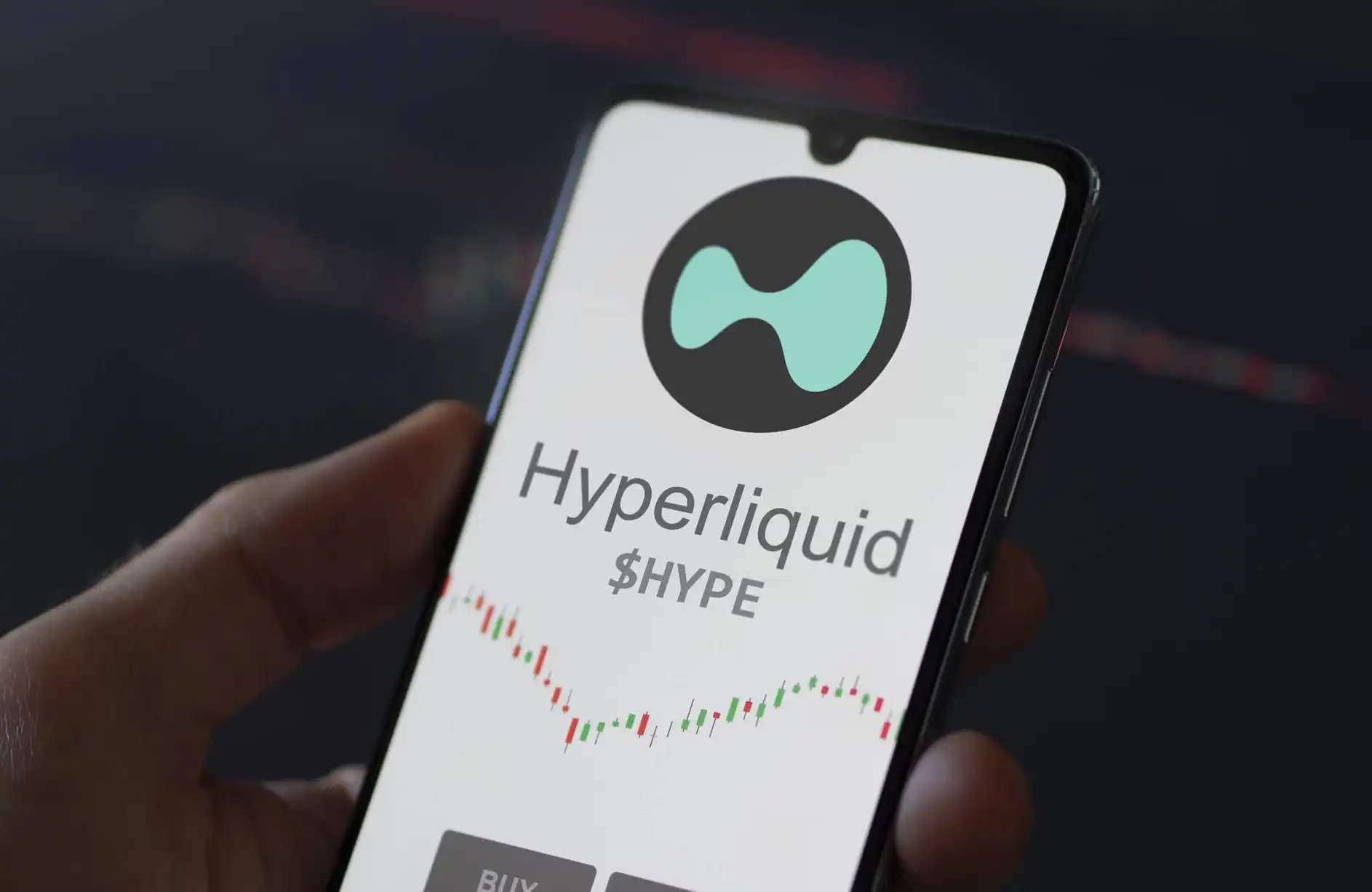When the game encounters blockchain chain game economy system thinking
Octopus Network Louis | Thinking about chain game Economy when Games meet blockchain
Original source: Octopus Network
Original author: Louis
Key point 1: The game economy paradigm of chain games has changed from a closed monopoly economy to a truly open market.
Key point 2: Tokenization of chain game assets brings changes in asset ownership, which can achieve "hot start" through financial effects.
Key 3: Three principles and six bases for the economic design of chain travel pass.
Key point 4: The best technology stack for chain games is the EVM compatible application chain.
Key point 5: Chain travel needs good infrastructure and good ecological support.
The Economic Paradigm of Chain Game from "Closed Monopoly" to "Open Market"

In the era of Web3.0, there is an important change: the original in-game asset publishing policy, which is part of the game's value system, will be stripped off and put on the public blockchain.
Once the game asset publishing agreement is placed on the public blockchain, developers cannot easily change the agreement. These in-game assets, whether they are fungible assets like coins or non-fungible assets like items and land, become standard form tokens on the chain. Then the asset is issued on the chain and can be traded using any protocol on the chain. This means that all game assets become part of an open, large, unified crypto asset market.
The game doesn't have to provide the trading agreement itself. Generally speaking, a market for game-created assets is not as liquid as a large market. As a game, the main business is to create the experience. At the same time, the game experience depends on the identity and assets on the chain. For the player, on the one hand, interacting with the game to consume the game experience, on the other hand, playing the game to acquire assets. The player's private key directly controls the game assets on the blockchain.
Therefore, chain travel has the most important two conditions of an open market economy:
The first is this system of property rights. It is very clear who the assets belong to. The player can dispose of assets in any way he thinks is beneficial to him at any time. Such as transfer, sale, etc., others have no right or interference.
The second, which had previously been a variety of separate game economies, was connected by blockchain into a vast, global, unified market with very low transaction friction. Much like the transformation of the fragmented regional economy in feudal society to the globalized market economy of capitalism.
Financial Utility of Tokenization of Chain Game Assets & AMP; Application of the utility
We say that the distinguishing feature of chain games is tokenization of assets. Turning a game asset into a token serves two main purposes:
The long-term implications are changes in ownership. There is usually an asset called a governance token or ownership token, which represents ownership of the game economy. The incentive system for chain games should be designed around how ownership is distributed.
The short-term significance of tokenization is what we call tokenization magic. Token magic works for all Web 3.0 economies, not just for chain games, helping platform-based economies through the cold start process. Whether online games, chain games or other platform economies, the core characteristics are network effects. The network effect is that the more users a platform has, the more valuable the service becomes to each user. Network effects are a magical thing, and they underpin much of the INNOVATION in IT and the emergence of Internet giants over the past few decades. But network effects are difficult to get started because the number of users is small and the value of the platform to users is low. The value of the app grows slowly as the number of users grows, and then quickly after breaking through critical mass.
The platform economies of Web2.0 are also facing the problem of cold start, or chicken egg chicken problem. So the solution is to raise money through venture capital, and then throw money at the market and subsidize users to get the utility up and running. In the era of Web 3.0, there is a new method, a new tool, token. If you look at the white paper of the Web3.0 project, the most important things are actually three:
- What kind of decentralized platform economy should we build
- How to launch the platform by issuing tokens
- How does token capture platform economic value
If these three points are convincing, the investor will accept that the token has value in the future. In financial markets, assets that are valuable in the future are valuable now and can be translated into return on risk. So investors are going to get tokens. Broad investors can invest time and energy in exchange for tokens, not necessarily by buying them.
So tokens have a financial effect from the start. Although the application utility of the platform is relatively low, platform participants can earn tokens by using it. As the number of users increases, the application effect of the platform increases. If the utility doesn't go up, it's just the financial utility, it's a Ponzi scheme.
As economies grow in size, new users are less at risk and their marginal contribution to network utility projects decreases. So new users should get lower and lower financial returns, but they get better and better utility. This way you can leverage the Web 3.0 economy faster. The explosion of Axie Infinity is a classic example.
Chain tour token economic design 3 principles 6 basis
There are three basic assumptions about the token economy design of chain games that will be the basis for subsequent discussions:
1. Chain games have network effects. Player's virtual economy.
2. Chain game assets must pass standard tokens issued on the chain.
3. Link game economies are part of the open crypto asset market.

So how do you design a chain game economy? Here are three design principles and six incentives to consider.
At the heart of an ECONOMY is a governance token, or ownership token, which represents ownership in the economy. It means to have both interests and rights. Interest is to transform the growth of economy into the growth of token intrinsic value through mechanism design, also known as value capture. There are many ways to capture value, and I won't go into detail here.
Ownership tokens are distributed to a variety of participants, including developers, investors and players, who contribute to the growth of network effects in the economy. In addition, ownership tokens should have governance rights and be able to participate in determining the future direction of linked game agreements, mainly game asset publishing agreements. Protocols can be refined and evolved through on-chain governance.
In most game economies, game developers will still be at the heart of the game. In a complex and evolving game economy, developers' share of the pie should not be too low. Don't start by giving 100% of your tokens to the community as opposed to Fair Launch. That's very irresponsible. If it's just forking an existing agreement, then all the contributions are actually coming from the community, and it's only fair to give 100% of the currency to the community in this case.
There are no ethical considerations for good or bad mechanic design. Is less fair for developers? That's not true. The goal of mechanism design is long-term Incentive compatibility. So that everyone has an incentive to do things that are good for the economy in the long run. In addition, whether an investor buys in the primary market or the secondary market, he provides the capital and should get a token.
The key is how to reward the player. A player's core contribution to the chain game economy is to improve the experience of other players. If someone buys an item NFT and then sells it, that person is an investor, not a player. By participating in the game to improve the experience of other players, a player is doing his part. This contribution needs to be validated and quantified in the on-chain protocol, and then rewarded with tokens, which is at the heart of the design of a chain game economy.
There are several factors to consider when rewarding players for their contributions:
The first is identity and items, who he is, has attributes, and in fact includes all the past investment the player has made into the economy.
Second, consider the time invested. All rewards must be time-dependent, otherwise the game will fast-forward.
The third is randomness, which is part of the fun of games.
The fourth is strategy, or skill, because there are very few real-time chain games nowadays, so it is right to call skill strategy. The strategy is to play the game and adopt the method. Strategies can be individual or collective, and collective strategies require cooperation, and rewarding cooperation creates society. In addition, there should not be an absolute optimal strategy to begin with. The outcome of a strategy should depend on the strategies of other players or other teams in the same time frame. That's how complex systems can be built, self-organizing, self-evolving. Once there is an optimal strategy that is absolutely rational, both the player and the team of players will eventually lose their free will and become slaves to the algorithm, and the meaning of the game disappears. The last two are content creation and expanding the game experience. Advanced games allow players to contribute content and extend the experience. On the one hand, it needs to be supported by the game technology platform, on the other hand, it needs to contribute content or contribute to a new game experience, which is not easy to evaluate. So I put an asterisk on it. This is high order stuff.
The last big principle is that the value capture mechanism of token ownership and the unlocking mechanism of additional issuance need to be properly set up so that the total value of ownership token can grow slightly faster than the rate of additional issuance of token in the long run. The implication is that the intrinsic value of unit ownership tokens should grow over the long run. Crypto asset markets. If a token loses its value as a store of value, whoever has it will sell it as quickly as possible. If no one wants to hold tokens, all token economic designs are impossible. So why not set the rate as low as possible? Because the low rate of secondary issuance means that it is too favourable to early players, raising the costs of later entrants.
Chain game economy ceiling public chain transaction processing capacity

In the second half, we discuss link infrastructure.
The chart above is simply the daily volume of BSC transactions over the past year. It can be seen that the average is on the order of several million a day, and the height can exceed more than 10 million. That's roughly the number of transactions that the industry recognizes as fast public links can support. At the end of last year, it was particularly congested, mainly because of chain travel. With more than 10 million transactions a day, congestion is already high. The biggest ceiling of the chain game economy is probably the capacity of blockchain. We call this the anti-network effect, where the more users there are, the less value to a single user because of congestion.
What to do? The only way to run a big chain game is to run an app chain, one game at a time. At the Axie level, you can have a million active users and millions or even tens of millions of transactions a day. A game of this magnitude can exhaust the capacity of the entire BSC public chain, and running a chain game on the public chain is not sustainable.
Don't just look at the current Gas rates. Gas of blockchain; Fees don't grow linearly when Ethereum processes hundreds of thousands of transactions a day. It's not expensive at all. But by the time you get to 800,000 transactions a day, you're getting close to capacity. Gas Fees have not gone up several times, but dozens of times. It's like being stuck in a traffic jam. When there are fewer cars, everyone is happy, but after a certain point, the average speed drops dramatically and no one can drive.
EVM compatible application chains are best suited to the technology stack of chain games

We believe that the best technology stack for chain games is the EVM compatible application chain. Why should I? EVM Compatible? Because there are many different blockchain development technologies, but... EVM Is the absolute mainstream. The most direct problem is that the development of chain games to find smart contract developers. Most of the people you can find are Solidity programmers, very few of you know other tech stacks. And & have spent EVM After seven years of development, all the pits have been trodden down and are the most mature and reliable.
App chains are chain by app, and although they are developed with smart contracts, they can still enjoy the benefits of chain by app. The first is to have a single chain of processing power. Application chain because of fewer nodes, the performance is better than the ordinary public chain, a day can process tens of millions of transactions, support chain swim to millions of daily activities.
And you don't have to worry about competing with other apps. If you're on a big public chain, maybe you've just had a great marketing campaign, and other apps start dropping in, and you find that no one's getting on. This sort of thing happens on Both Ethereum and EOS. Chain games have higher interaction density and lower unit value of transactions than DeFi. So once the big public chain gets jammed, the first thing that gets hurt is chain travel. Because most of the chain game users are price sensitive.
The second advantage is that the app chain is dedicated to an application. Can be fully customized to achieve the best user experience. You know the Axie Infinity explosion happened in March and April of last year. The most important opportunity is the launch of the dedicated side chain Ronin. When Ronin went live, it reduced Axie's transaction costs to almost zero, triggering an explosion. Axie started in '18, and the whole technology development was very bumpy, and finally they had to develop Ronin themselves.
The word Ronin means a Ronin, a warrior without a master. Axie named this side chain Ronin, meaning that it can control its own infrastructure and not be controlled by others. The whole chain serves an app that you can upgrade. On any public chain, an application requires the public chain to be able to upgrade, which is impossible.
Octopus Network one-stop infrastructure services

Our octopus network belongs to NEAR ecology. NEAR is a great public chain. The end of 2021 was the best performing crypto project. From the 40s to the top 20, with a market cap of $11 billion, that's a long way to go. The NEAR core team is a very strong technical team. Near-led sharding is the most complex but potentially scalable blockchain technology.
NEAR Ecology also has an iron triangle of development. In addition to NEAR native smart contract development, EVM development for AURORA AURORA is supported. The main purpose is that ethereum's DeFi protocol can be ported very easily. The third corner is OCTOPUS OCTOPUS network, which is an application multi-chain network built around NEAR. Each application chain is an independent chain with dozens of nodes. The app chain has seamless cross-linking with the NEAR main chain and two-way asset cross-linking with Ethereum.
The success of an app chain requires four pillars. The first is security, so that users can safely store their assets on or across the chain. Octopus Network offers rent security LPoS, which is rent on demand security with controllable cost and security levels that increase with economies of scale in the application chain. The second is cross-chain, octopus app chain and NEAR natural cross-chain, cross-chain with Ethereum via the Rainbow Bridge. We develop Substrate IBC, and the octopus application chain is connected to Cosmos via IBC. The third is infrastructure, a whole set of infrastructure services provided by Octopus Network. The App Chain team only needs to do the app and the front end, and everything else, including nodes, blockchain browsers, RPC clusters, Indexer, and more, is provided for free by octopus Network.

Various Web3.0 applications, including linked games, are most important for developing their own communities. Now when you do a chain tour project, you must choose to join a good ecology, get the support of ecology, and get the attention of the community, otherwise no one will pay attention to what you do. Octopus network can be seen as a de-Sinochem incubator. The team does the development, registers with octopus network, we do the technical review, and then there is an open voting mechanism, which is to solicit support from the Octopus community. We help spread the word about the game in the community. Every once in a while, the chain of applications with the most support launches the main network.
So far, octopus network has launched two app chains, which will be launched at a rate of two to three weeks. Octopus application chain and NEAR are naturally cross-chain. Native tokens can cross the chain to do ID0 above NEAR. Octopus Network, the first 10 app chains to join, delivered 20W OCT airdrops to its investors at ID0, helping the app chain raise about $1 million in additional funding. Finance transactions, since they are standard tokens, can be combined with all NEAR DeFi protocols.
Disclaimer: This article is for reference only and should not be used as legal, tax, investment, financial or any other advice.

The original link
Welcome to join the official BlockBeats community:
Telegram Subscription Group: https://t.me/theblockbeats
Telegram Discussion Group: https://t.me/BlockBeats_App
Official Twitter Account: https://twitter.com/BlockBeatsAsia


 Forum
Forum Finance
Finance
 Specials
Specials
 On-chain Eco
On-chain Eco
 Entry
Entry
 Podcasts
Podcasts
 Activities
Activities
 OPRR
OPRR









